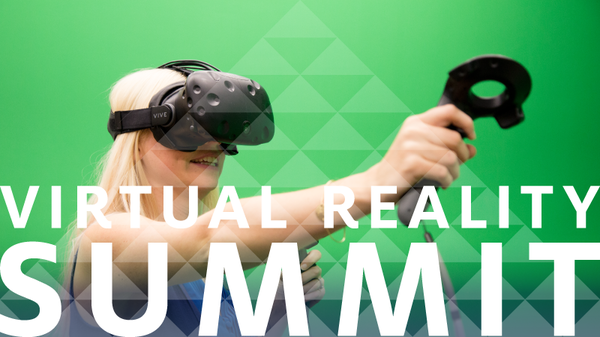
Virtual Reality Summit

Experience virtual reality, augmented reality, 360 video, and more. Consult with campus innovators about teaching and research applications. Join us for demonstrations of projects and a lunchtime panel discussion.
Online registration has closed, but you may still register on-site for our morning and afternoon sessions. Lunch panels for both days are fully booked.
| Lunch and Panel 11:30 a.m.–1:30 p.m. |
|---|
| Virtual Reality in Teaching and Research Moderator: Ash Black, Global Initiatives Panelists: Bryan Carter, College of Humanities Joe Farbrook, College of Fine Arts John Grant, Defense Intelligence Agency Lloyd LaComb, College of Optical Sciences John McBride, LookingGlass Young Jun Son, Systems and Industrial Engineering |
| Open Demo Sessions 10:00 a.m.–11:30 a.m. and 1:30–3:00 p.m. |
|---|
|
Virtual Reality, 3D Printing, and New Building Materials |
|
A Virtual Factory for Manufacturing Courses |
| BrainGainz Ricardo Valerdi, Department of Systems & Industrial Engineering, College of Engineering A VR app aimed at improving concussion education. |
|
Ken McAllister, College of Humanities |
| Virtual Harlem, Motion Capture Bryan Carter, College of Humanities |
|
Volume Holographic Optical Element (VHOE) Lens |
|
3D Modeling |
|
Journalism 360 |
|
Working with 360, Mobile and In-browser 360 Applications |
| Learning to Code in VR, a Workstation Demo Ash Black, Tech.Global, Office of Global Initiatives Is VR development easy? No! But you CAN get your feet wet a lot faster than you might imagine. Drop on by our ‘Coding in VR with Unity’ demo booth and if you’ve got the time, settle in for a self-paced tutorial experience that will really help you understand how programming is achieved in Unity for Virtual Reality applications. You’ll be following a standard YouTube 3D modelling tutorial, but with some help from our crew. At the end, we will show you the magic trick of integrating an in-game camera to produce a home-grown VR experience. The application you will have no practical use, but the context you’ll gain in about an hour of effort is invaluable. Come on by and code! |
|
VR Studio and iSpace |
|
LiDAR Walkthrough of Kartchner Caverns |
|
Chronological VR |
|
VR and 360 Video |
| HoloMaps by Taqtile: for Visualization of 3D Geo-encoded Data John Tomizuka, Taqtile |
|
John Grant, US Defense Intelligence Agency |
|
VR Athletic Training Apps |
| The MMT Observatory on Mt. Hopkins: VR Tour of the Summit (in a Genie-Lift!) Dallan Porter, MMT Observatory, Department of Astronomy and Steward Observatory Would you like to experience the summit of Mt. Hopkins at 8500 feet and see the 6.5-meter MMT telescope up close? We’re going to take you for an interactive ride around the summit in a 100-foot high Genie-Lift and give you a bird's-eye view of the enormous amount of work involved in re-coating the giant primary mirror with aluminum. The MMT is a 6.5-meter telescope, a joint venture of The Smithsonian Institution and The University of Arizona, located on the grounds of the Smithsonian’s Fred Lawrence Whipple Observatory in the Santa Rita mountain range south of Tucson. |
Presented by University Libraries, University Information Technology Services, Defense & Security Research Institute, Research Discovery and Innovation, and Academy for Defense Intelligence, Defense Intelligence Agency.